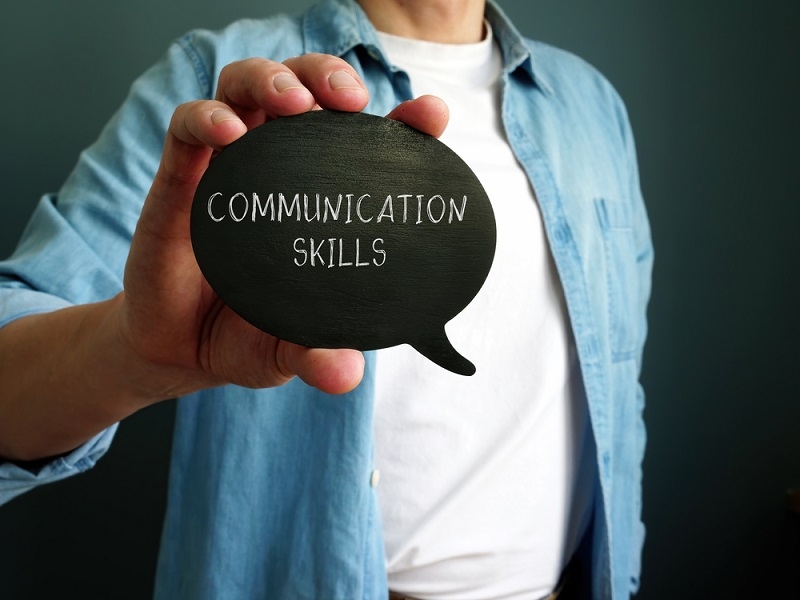
In today's competitive work culture, successful communication is not a luxury anymore—it's a need. Business corporations across the United States are increasingly seeing that it is ever more vital that they acknowledge that good professional communication skills can prove to be the key to all the difference between an efficient, capable workforce and a group weighed down by misunderstandings, miscommunication, and lost opportunities. As a team leader, when you are collaborating with other co-workers or brainstorming with customers, improving your communication in leadership can actually improve collaboration and productivity in the workplace.
Here, let’s learn what professional communication skills are, how to obtain leadership communication, and effective methods of creating effective workplace communication improvement. We shall also discuss public speaking workplace skills, and some guidelines for clear professional writing, all in an effort to help professionals perform exceptionally well in teamwork settings.
Professional communication skills are such skills and techniques through which people can communicate ideas, information, and feedback successfully in the workplace. Professional communication skills include verbal communication, non-verbal communication, and written communication and are most useful in developing confidence, team spirit, and an effective work culture.
The most basic professional communication skills are:
Active Listening: Providing the highest attention to the speaker and answering with care.
Clear and Concise: Presentation of thoughts in a clear and easily comprehensible manner.
Non-Verbal Communication: Proficient use of body language, eye contact, and tone.
Empathy and Emotional Intelligence: Possessing the capacity to understand and react to other people's emotions.
Adaptability: The capacity to modify the communication style to meet the needs of different groups or circumstances.
It is worth cultivating such skills not only for individual development but for work communication improvement overall as well. Successful communication teams are more efficient, make higher quality decisions, and tension is less.

It's teamwork that gets all high-performing organizations humming. Running a marketing promotion, launching a new product, or spearheading a cross-functional project—people have to communicate to get anything done. Professional communication skills directly impact:
Team Cohesion: Open and respectful communication aids in building trust among team members.
Problem-Solving: Responsive communication groups work well at developing challenges and constructing solutions.
Efficiency: Open communication reduces misunderstanding, delays, and redundancy.
Innovation: Open sharing of ideas supports innovation and creative thinking.
Communication is really the glue that makes working together. Organizations that focus on constructing professional communication skills via learning and development are likely to record quantifiable improvements in project performance, employee morale, and client satisfaction.
Workplace communication enhancement requires organizational support, self-awareness, and practice in conjunction. Some of the ways workplace communication enhancement can be achieved are:
Employees should be able to express themselves freely their ideas, problems, and concepts without fear of being criticized or retaliated against. Managers who promote open communication establish a culture where collaboration becomes easy. Team meetings, one-to-one communication, and anonymous feedback systems may promote openness.
Active listening is not only hearing the words but also deciphering the unspoken message and providing feedback in sensitivity. Invite the participants to paraphrase the words, ask open-ended questions, and verify each other's understanding of the speaker's perspective. Active listening enhances mutual understanding and reduces the chances of miscommunication.
Whether through e-mails, reports, or instant messaging, good business writing is an essential part of enhancing communication at the workplace. Avoid jargon, be concise, and convey messages in a logically structured format. Proofread the communication before sending to ensure professional accuracy and thus enhance healthy team communication.
In today's hybrid and remote workplace setups, technology is where communication revolves. Slack, Microsoft Teams, and project management tools allow for information sharing, documents, and open conversations in the moment. Training employees and best practices on leveraging such technology to enable smooth workplace communication can be a significant addition to workplace communication enhancement.
Feedback is also a professional communication skill. Giving positive feedback involves identifying areas of strength, areas needing improvement, and suggesting practical steps. Feedback ensures constant growth, transparency in getting things done, and improved teamwork.
Workplace public speaking is an essential professional communication skill to acquire. Clear communication in meetings, customer presentations, or status updates can close the deal and command respect. The following are methods to improve public speaking in the workplace:
Know Your Audience: Tailor the message to the audience's needs, interests, and knowledge level.
Organize Your Presentation: Begin with a strong opening, followed by key points, and conclude with a clear call-to-action.
Practice and Rehearse: Familiarize yourself with your content to reduce nervousness and enhance your presentation.
Use Visual Aids: Slides, graphs, and charts assist in communicating complex information.
Involve the Audience: Encourage questions, discussion, and criticism to make your presentation dynamic and interactive.
With the acquisition of public speaking in the workplace, professionals will be more positioned to be able to present ideas, be heard, and be in a position to be able to contribute constructively to group projects.
Effective communication is the identifying mark of effective leadership. Effective leaders generate trust, achieve cooperation, and lead organizations to prosperity. Effective areas of communication in leadership are:
Vision Sharing: Organization of organizational vision and strategic goals.
Empathy: Empathy towards employees' issues and problem-solving with empathy.
Transparency: Transparency in challenges, successes, and expectations.
Delegation: Effective communication of work and responsibilities so that people can be held responsible.
Conflict Resolution: Resolving differences by positive means and preserving team harmony.
Communicative leaders who value communication in leadership develop a culture wherein professional communication skills are displayed, set, and nurtured at every level of an organization.
Effective team communication is the key to successful teamwork. Effective communication teams can effectively manage projects, resist challenges, and deliver within deadlines. The following are effective steps to manage team communications:
1. Clarify Roles and Responsibilities: Role clarity dispels uncertainty and makes it easy to keep things in place. The members must know their responsibilities and what they are expected to do when it comes to collaborating.
2. Have Communication Procedures: Explain the process and when communication is to occur, either via email, messaging, or meetings. Standardization means that everyone is on the same page, and information will easily flow.
3. Be Inclusive: Ensure there is involvement of all the people on your team. Differing opinions create good decision-making and creativity.
4. Regular Check-Ins: Regular check-ins ensure there is progress pace maintenance, conflict resolution, and everyone is aligned to the project goals. The points of check-in ensure better workplace communication and improve teamwork.
5. Foster Feedback and Reflection: Teams need to look back after projects and talk about what they got right and how it can be done better. This feedback loop reinforces good team communication even further and can be used to guide future collaborations as well.
Written communication remains one of the key professional communication skills. Emails, reports, proposals, and instant messages must be capable of transmitting information accurately and professionally. This is why professional clear writing is critical:
Minimizes Misunderstandings: Well-written words guarantee that the targeted recipient receives the message in the correct manner.
Establishes Credibility: Professional writing evokes professionalism along with attention to detail.
Facilitates Collaboration: Accurate documentation allows teams to easily refer to information, hence effective team communication.
Saves Time: The simple and concise writing reduces follow-up clarification to a bare minimum.
A few business writing tips are writing in an active voice, dividing content into small bites, and proofreading for clarity and grammar.
Communication skills are utilized most effectively on a daily basis. The following are a few tips on applying them in daily work life:
Starting Meetings with an Agenda: The meeting prepares the participants and leads to a brief discussion.
Practice Active Listening Daily: Answer questions and proposals from others with caution.
Use Visuals to Reinforce Ideas: Ideas become clearer with graphs, charts, and diagrams.
Ask for Feedback on Your Communication: Ask managers or colleagues to offer tips to improve your communication and present it more clearly.
Invest in Training: Public speaking, writing, and leadership communication training can improve skills throughout the team.
Adopting these practices in the organization enables professionals to continually work on workplace communication improvement and more firmly establish a teamwork culture.
The development of professional communication skills has some benefits for individuals and companies:
Increased Collaboration: Teams work more efficiently and effectively.
Higher Job Satisfaction: Communication erases job frustration and miscommunication.
Better Leadership: Leaders are better able to motivate and lead teams.
Career Advancement: Public relations officers are more vulnerable, more powerful, and more promotable.
Better Client Relationships: Good communication gives confidence and client satisfaction.
And lastly, effective communication is the key to professional success in almost everything.
Even the greatest team of all time has communication problems. The secret to successful work communication is listening carefully to prevalent problems:
Information Overload: Edit crucial information and master the art of brevity.
Remote Work Problems: Leverage technology and have frequent virtual check-ins.
Cultural Differences: Highlight cultural sensitivity and tailor your communication to it.
Conflict: Manage conflict early on and positively with active listening and empathy.
Lack of Feedback: Create a feedback culture where it is accepted, formalized, and actionable.
By proactively addressing such matters, teams can achieve maximum effective team communication and benefit from effective collaboration.
Professional communications skills are not a soft skill—instead, they're the path to business success. Brief professional writing, workplace public speaking, leadership communication, or effective team communication—it's all important to learn to make a dramatic positive impact on teamwork, productivity, and office harmony in general.
Companies that invest in professional communication skills training enhance employee performance and a culture of openness, inclusivity, and continuous improvement. Such employees who focus on such abilities are effective communicators, effective leaders, and valuable assets to the business.
Improving workplace communication is a constant battle, but with these practices, professionals can create a more substantial, productive, and collaborative work environment. As a manager, team member, or executive, improving your professional communication skills is the instrument by which you can achieve successful collaboration and long-term achievement.
This content was created by AI